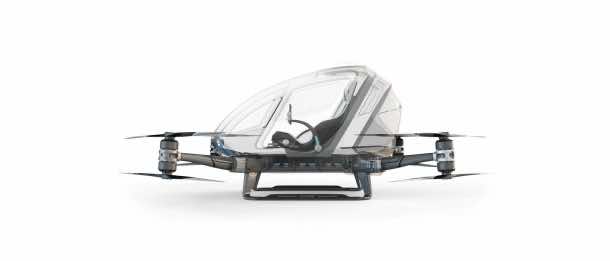Ehang gained quite a media traction following the unveiling of the fully autonomous and human carrying drone at CES 2016. The vehicle was basically a mix between personal helicopter and a quadcopter that featured high-tech components and kept the pilot in the air while ensuring safety. Although the craft might fail to conform to the American model of aviation, that isn’t stopping the company from working rigorously on it. Ehang is also working with government bodies to carry out legalization of the craft that has gained approval for flight testing.
Tom Wilczek, a GOED aerospace and defense specialist said, “The State of Nevada, through NIAS, will help guide Ehang through the Federal Aviation Authority regulatory process with the ultimate goal of achieving safe flight.” The Ehang 184 features a fully autonomous guidance system thus rendering itself as an auto-guided electric helicopter.
It will be powered via computer guided AI system and the pilot will only have to input the landing and take-off destinations. Pilot will also be able to request for an emergency landing causing the craft to carry out some complex AI algorithms thus executing the landing safely. It has been constructed as a high performance vehicle using composite materials that features aircraft grade aluminium alloy, carbon fiber and military grade plastics.
It uses 8 motors that are controlled wirelessly via 4G network with each motor having an encryption key that is unique. The craft has a total flight time of about 23 minutes during which it cruises at an average speed of 100 km/h. It takes about 2-3 hours to charge completely and can achieve an altitude of about 500 meters.
As of now, the craft can only cater to a single passenger and cost around $200,000-300,000. As expected, safety is the major concern over here and was addressed properly during the engineering phase of the craft. The developers claim that in case of any component failing, including two of the 8 engines, the Ehang 184 will detect the problem and shall locate a suitable landing zone to land ASAP. It promises a comfortable cabin environment with a stable flight experience along with amazing dynamic balance and wind resistance. Let’s see if this craft can make it to the consumer market in America.
